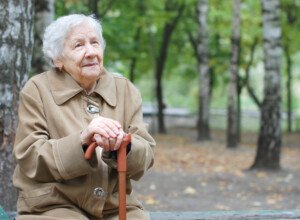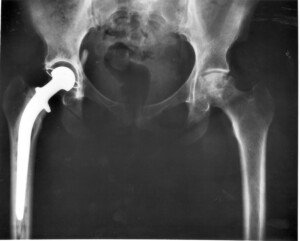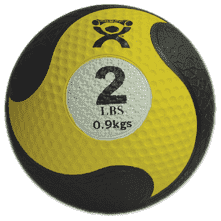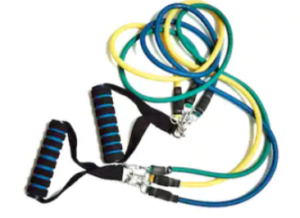
Are you panicking because a very elderly loved-one, 89, just fractured a hip? I know how you feel.
When my mother was 89, which is considered advanced elderly, she broke a hip after falling, but she’s actually in better shape now than she was BEFORE the injury!
So this is possible — but how possible? There are many factors involved that play into the eventual outcome.
First off, a study that appears in the Journal of General Internal Medicine states that the likelihood of regaining a high level of function “was particularly low in those older than age 85” who had other health issues.
The paper reports that subjects who’d been physically active before the hip fracture came in with a 36% full recovery rate — described as independent living; only 32% could walk a block without a problem; and just 29% could climb stairs.
My 89-year-old mother had had quintuple bypass surgery four years before the hip fracture. She also had/has sciatica.
Despite that, after she recovered from her hip fracture, she could climb stairs independently.
Barbara Bergin, MD, a board certified orthopedic surgeon, points out that my mother’s experience is rare for anyone recovering from a hip fracture.
I believe that unusual caregiving circumstances played a big role in her “better than before” recovery — and I’ll get to those circumstances in a moment.
The Truth About Hip Fracture Recovery

“Most people, no matter what age, are left with a hip and function that never quite returns to pre-injury state,” says Dr. Bergin, co-founder of Texas Orthopedics, Sports & Rehabilitation Associates.
“That would be my expectation if I sustained a hip fracture tomorrow. A lot depends on the type of fracture, how it’s fixed, and the condition and age of the patient.
“There are many other factors, and so global statements are hard to make.
“For example, just having a loving, caring family can make all the difference in the world.
“But if you just look in the literature and at objective numbers, you will see that most people, especially the elderly, never fully recover, and even still, some die within a year. This was the outcome for my grandmother.”
Reasons for Failure to Recover
Dr. Bergin explains, “The reasons for failure to recover are many: bad fracture, bad injury, loss of blood supply to the bone, failure of the bone to heal, lots of soft tissue damage, blood clots, painful hardware after the surgery, mental status changes, fear, depression and the list goes on.
“Now this might sound like a terrible thing, but most patients do pretty well, and fewer die now than in 1970.
“To be honest, most of us actually do fine with some limitations and some pain, especially as we get older.
“In my grandmother’s day, most patients were dead within a year. Now it’s only around 20%.
“This is because of the improved methods we use to fix the fractures, which allow patients to mobilize immediately after surgery. Just that simple change has made all the difference.”
Caregiving Circumstances with My Mother
Prior to the surgery, my 89-year-old mother was not using a cane, but didn’t have a stable-looking walk, either.
Her surgeon told me that following surgery, she’d be on a walker for a while, then using a cane, and that “there’s a slim chance she’ll get off the cane.”
For a while, I thought that was true. Two months after the operation my mother’s walk was so bad that my father and I begged her to use the walker — which she refused.
I refused to believe that just because the physical therapist wasn’t getting good results, that the situation was hopeless. She quit the physical therapy. This was frightening.
Somehow, someway, I managed to talk a very stubborn, strongwilled woman into letting me give her weekly “therapy sessions.”
As a former personal trainer, I came up with some routines that were VERY unlike the ones that the assigned physical therapist had given her.
What really cinched her compliance was that I told her that the only way she’d enjoy her upcoming vacation was if she were fully able-bodied, fully recovered — and to just stick to the once weekly, 30-minute sessions.
The sessions were designed to prevent a second fall, either from stumbling on something or from being accidently knocked against in a crowd or by a clumsy walker.
The sessions began only AFTER my mother’s gait began resembing something normal. Some of the exercises:
• Catching a 2-lb. medicine ball I tossed to her and tossing it back to me (to train her body to “recalculate” when put off-balance)

• Resisting against me with her body (using her legs) when I sustained a “push” against her from the side at her shoulder (a pillow was against her shoulder).
• Walking up a flight of stairs (eight stairs) — sideways, facing one direction, then repeating this in the other direction (body facing the wall, feet parallel to the stairs, without holding onto the rail or wall).
I was right behind her and prohibited her from doing this at any other time. (This isn’t reommended for someone with bad knees.)
• Playing tug-o-war with an exercise band (a great recalculation drill)

Come vacation, my mother’s gait was noticeably better than it had been the previous year at the same vacation destination. I had little fear that she’d have another fall.
The issue with many advanced elderly people, when it comes to regaining independence, is their will, motivation and attitude — but also their support system.












